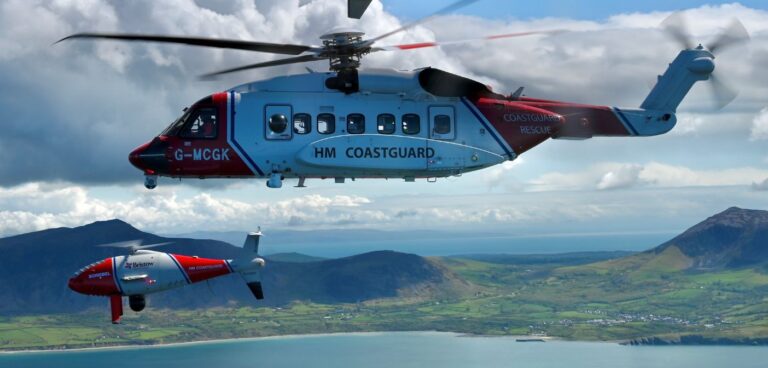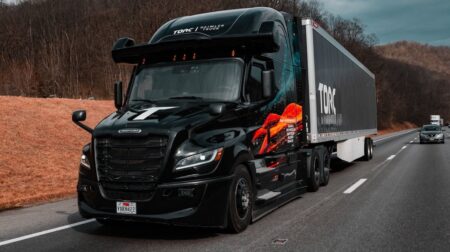HM Coastguard’s search and rescue teams will use unmanned aerial vehicles (UAVs) alongside its helicopters, planes, boats, and cliff rescue teams on missions this summer.
For the first time, search and rescue helicopters and fixed-wing surveillance aircraft will be joined by UAVs at sea and over land in North Wales.
Initially trialled a year ago, the UAV will fly from the HM Coastguard helicopter base at Caernarfon and will also participate in a series of major training exercises with other emergency teams.
During a phase of operational integration training the UAV, operated by Bristow Helicopters, flew in formation alongside both the HM Coastguard S92 helicopter and HM Coastguard’s King Air surveillance aircraft, operated by 2Excel Aviation.
Neil Ebberson, director UK search and rescue at Bristow, said: “Flying the Schiebel S-100 remotely piloted system alongside our manned aircraft from Caernarfon and the 2Excel surveillance aeroplane was a landmark for the HM Coastguard air search and rescue service.
“While we regularly train with both the 2Excel fixed wing crews and our Caernarfon based S92 crews, this was the first time the three aircraft types had operated and integrated in the same airspace.
“Our close work with the CAA, Caernarfon Airport and the significant stakeholder community across North Wales has been key to achieving this significant milestone. Our ability to successfully integrate the technology into the existing service is delivering on our commitment to operational excellence.”
Furthermore, remotely piloted aircraft are expected to play a key role when HM Coastguard launches its second-generation of search and rescue services in 2024.
Maritime and aviation minister, Robert Courts, said: “Keeping people safe on the sea and around our coast will always be a priority, which is why we continue to explore new and cutting-edge ways to modernise search and rescue efforts.
“Drones have the potential to help our coastguard teams save even more lives and it is right we are working to advance these technologies here in the UK.”








